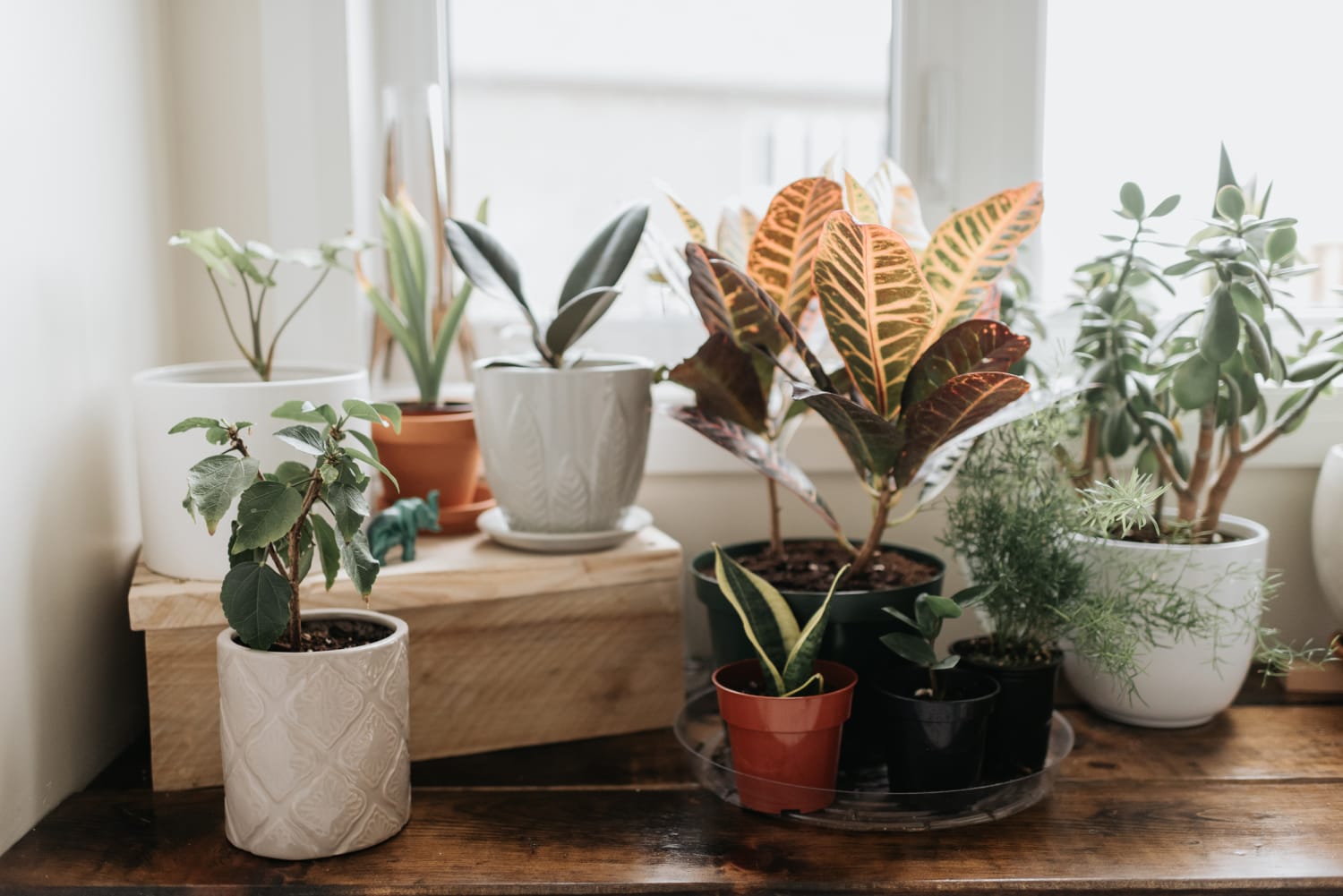Indoor Plant Care Made Easy: Simple Tips for Thriving Green Friends

Picture this: I was convinced indoor plants were “easy,” yet my first pothos looked more like wilted spaghetti than a houseplant within weeks. If you’ve ever sheepishly shoved a brown-leafed fern in the trash or hovered anxiously by your window with a watering can—welcome to the club. Over five years, dozens of plants (some accidental casualties…), and countless experiments later, I’ve landed on plant care tactics that genuinely work—no green thumb required, just real-life evidence.

Let’s skip past the vague “bright indirect light” advice and get into strategies that have actually survived my sunless Chicago apartment winters, hectic work travel, and two cat-induced disasters.
Indoor Plant Care: Hard-Won FAQs from a Real-World Plant Parent
1. What kind of light do my plants really need?
Forget obsessing over southeast versus northwest windows unless you’re chasing rare orchids. Instead, here’s what changed everything for me: use the book/shadow trick. At noon, stick a hand or book where your plant lives:
- Clear shadow with sharp edges? Great for succulents and cacti.
- Fuzzy/soft shadow? Perfect for most foliage types (pothos, monsteras).
- No shadow? Go for snake plants or try grow lights.
If I had known this in Year One, I wouldn’t have lost half my calatheas to dim corners. Pro-tip: $25 gets you an adjustable LED grow lamp off Amazon; it saved three of my most dramatic begonias last December.
2. The secret to knowing when to water (not how often!)
I killed more plants by following those “water every X days” charts than I want to admit. The humidity, pot size, even air conditioning—all mess with timing. Here’s what finally stopped my overwatering streak:
Buy a $7 soil moisture meter from Home Depot or Lowe’s—it changed everything. Stick it in the soil; if it reads dry at root level (not just on top), then water thoroughly until drips from the bottom holes.
And if you can’t grab a meter right away? Use your finger plus look at leaf droop and weight—a freshly watered pot is noticeably heavier than when it needs water. Don’t trust only one method.
3. Why drainage holes matter (and how to cheat if yours don’t)
Early on, I bought gorgeous ceramic pots–then wondered why every peace lily melted into oblivion after three months. Sitting water under roots is like leaving shoes in puddles overnight: unsalvageable funk.
Hacks that got me through:
- Double-potting: Keep your plant in its plastic nursery pot inside your pretty planter.
- Lava rocks or gravel? Nice idea in theory but rarely enough on their own—I tried it; water still pooled and roots rotted.
Learned the hard way…now I only buy pots with real drainage—or drill them myself!
4. Actually cleaning leaves—the shortcut version
I used to ignore this step completely (“nature doesn’t dust itself!”). BIG mistake—by month four, my monstera leaves couldn't catch any sun and looked perpetually sad.
My routine now: once per month during Netflix binges, I use an old microfiber sock dampened with lukewarm water (gloves fall off!). For fuzzy or small-leafed varieties like pilea or ferns? Quick shower under the sink spray nozzle wakes them right back up—and helps flush out pests before they explode out of nowhere.

Pro tip: Skip leaf shine sprays! They clog pores and attract dust faster than you can say “Noooooo!”
5. Dealing with yellow/brown leaves & sluggish plants—the calibrator method
Back in summer 2022, six of my spider plants yellowed at once—panic mode activated! Turns out fluorescent lighting plus overwatering had left minerals building up like concrete around their roots.
Here’s how I troubleshoot now:
- Slowly peel back issues layer by layer.
- Water issue? Reset roots with a thorough rinse + new soil.
- Too much/little sun? Move twice within ten days and observe—for example, moving my dieffenbachia north to west suddenly sparked new growth!
- Brown tips = usually low humidity—grouping several plants together raises it instantly (plus looks lush).
You don’t have to guess; test systematically instead of everything-at-once chaos mode—which made things worse before!
6. Easiest unfussy indoor beginners—for real life
I gift snake plants (Sansevieria) because mine regularly survives heatwaves AND neglectful holidays…without batting an eye! My ZZ plant has endured who-knows-how-many forgotten weekends home alone—and bounced back each time as if nothing happened.
My first attempt at ivy failed famously—it crisped up despite careful misting—but pothos turned out nearly indestructible even as my schedule got busier/forgetful last winter.
Favorites I always return to:
- Snake plant (“Mother-in-Law’s Tongue”): Survived a week locked in an office closet!
- Pothos: Cuttings root easily in water—a science project for bored afternoons.
- Philodendron cordatum: Adaptable tolerance; mine moved homes twice and still threw out new vines.
Don’t chase fussy varieties until you're looking for more challenge—that came later for me!
7. Natural pest control you’ll actually use
Spraying neem oil stinks (literally)—ask anyone who tried it indoors during dinner prep—but sometimes it's necessary for persistent spider mites or scale insects. What really kept pests down consistently wasn’t elaborate mixes though:
Humidity trays + biweekly “leaf patrols.” Flick off visible bugs quickly; dab alcohol on cotton swab for stubborn ones.
If fungus gnats arrive (inevitable), thin layer of Mosquito Bits works wonders—better than sticky traps alone or letting soil dry too long (which killed some tolerant but thirsty pals by accident).
Bonus weird hack: Orange peels scattered around DID cut down on gnat sightings short-term!
8. Realistic fertilizing—don’t commit to complicated schedules
In spring/summer when you see new growth spurting up each week, that’s prime feeding season—I add liquid fertilizer at half-strength every four weeks (Espoma’s Indoor Plant Food has never burned tips so far). In winter? Skip it entirely unless using strong grow lights—inactive roots will just hoard unused salts and cry about it later!
Lesson learned from crispy leaves one February years ago…

9. Routines That Stick Even When Life Is Chaotic
What made plant care sustainable for me was bundling tasks into “Sunday Plant Time”—15 minutes max:
- Spot-check each plant: Soil moist/dry?
- Rotate pots if one side leans
- Quick dust wipe-down
- A peek underneath each big leaf
Miss a week here or there? Plants are surprisingly forgiving as long as true emergencies get caught early!
Digital tip: Google Calendar reminders every Sunday help until habit sticks—I ignored these for ages but they immediately ended disaster cycles ("Oops! It's been HOW long since that fiddle fig saw sunlight?!").
Real World Scenarios Straight From My Apartment
The Drowning Monstera
First year living solo—watered religiously every Saturday morning no matter what because someone online said so... Within two months: yellow spots everywhere, weird smell rising from soil even after airing out the apartment (gross). Solution after reading endless forums = repotting with fresh mix/drainage holes/switching to finger + moisture meter testing only between thorough soakings—not clockwork rhythm!
Battle of the North-Facing Window
That little ficus Benjamina looked miserable next to my front door all winter despite daily pep talks! On impulse shifted her onto bookshelf two feet closer (got midday indirect light instead). New leaves unfurled within three weeks—the confidence boost was REAL.
Spider Mite Invasion
One January heat wave ramped up dryness...and suddenly webbing appeared overnight under leaves nationwide! After losing patience wiping leaf after leaf by hand…I hit affected calathea/pothos with two rounds mild soapy spray then sat them together on humid pebble tray near kettle—recovered perfectly while rest stayed clear.
Troubleshooting Shortlist From Experience
- Pre-vacation stress relief = line all pots together & fill shallow trays with water beneath just before leaving—they wick moisture slower that way AND reduce forgotten casualties!
- Rushed mornings? Popsicle sticks labeled by plant type + basic needs taped nearby saved three friends babysitting disasters during trips!
- Forgetful as me sometimes? Snap pics weekly; track progress/problems easily instead of squinting trying to remember "did these brown marks get worse?"
Online forums like r/houseplants have solved mysteries faster than any hotline ever could!
Cheer Section—Progress > Perfection
Every dead fern taught something valuable—even lifelong gardeners lose houseplants along the way! The thrill never fades when a stubborn peace lily throws up shiny new growth after surviving drafts or rescue repots—a reward worth any misstep early on.
No textbook advice matches watching YOUR plants respond day-to-day…or switching things up until you find their perfect spot/light/routine combo yourself! Start today with just one swap—from calendar schedules toward hands-on checking—or showing friends/family that yes…you CAN be "that person" whose windowsills overflow with happy green company.
Happy planting—and may your next batch stay vibrantly leafy longer than any ill-fated ferns before them!



